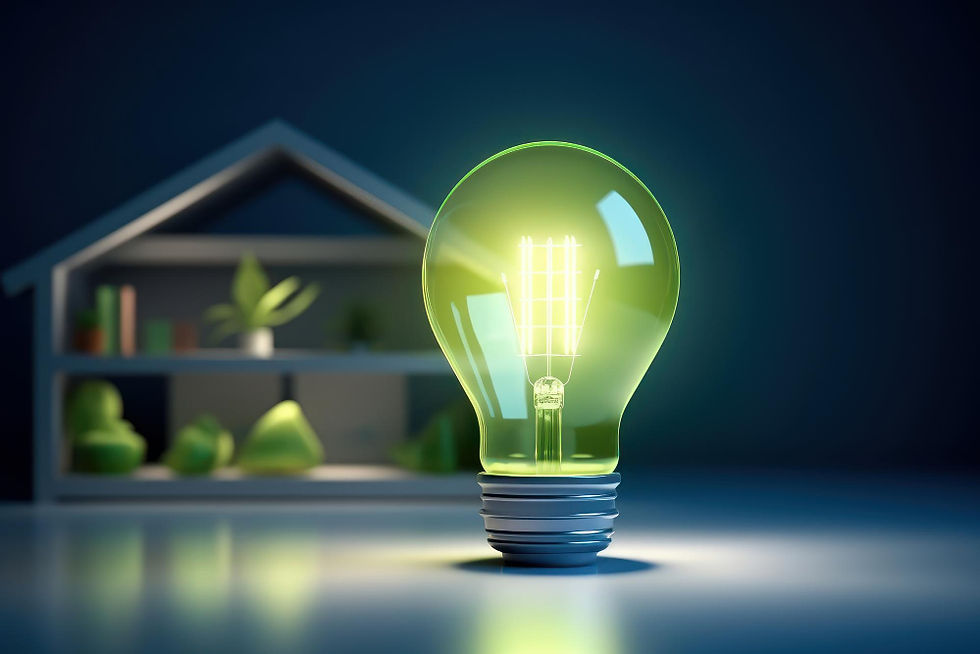Energy-Efficient Home Design: EcoHive's Top Tips for a Sustainable and Cost-Efficient Space
- Bhavana Kadam

- Nov 4, 2023
- 2 min read

Introduction: Creating an energy-efficient home isn't just a trend; it's a necessity. As concerns about climate change grow and energy costs continue to rise, more and more homeowners are seeking ways to reduce their environmental footprint while saving money. EcoHive Design Studio understands the importance of energy-efficient home design and is here to provide you with a comprehensive guide to achieving a sustainable and cost-efficient living space.
1. The Importance of Energy-Efficient Home Design:
In the era of climate change, energy-efficient homes are a vital part of reducing our carbon footprint and conserving natural resources. Additionally, they lead to substantial cost savings over time.
2. Effective Insulation:
Proper insulation is the foundation of an energy-efficient home. It helps retain heat in the winter and keeps your space cool in the summer, reducing the need for excessive heating or cooling.
3. High-Efficiency Windows and Doors:
Energy-efficient windows and doors minimize heat transfer, drafts, and energy loss, contributing to both comfort and cost savings.
4. Smart Home Technology:
Smart thermostats, lighting, and appliances optimize energy usage, making it easy to control and monitor your energy consumption.
5. Solar Power Integration:
Incorporating solar panels into your home's design allows you to generate renewable energy and reduce your reliance on traditional electricity sources.
6. Natural Lighting and Ventilation:
Utilizing natural light and ventilation reduces the need for artificial lighting and air conditioning, leading to both energy savings and improved indoor comfort.
7. Energy-Efficient HVAC Systems:
Energy-efficient heating, ventilation, and air conditioning systems maintain a comfortable indoor environment while conserving energy and reducing utility bills.
8. Sealing Air Leaks:
Addressing gaps and cracks in your home's structure prevents energy wastage, making your space more efficient and comfortable.
9. Water Efficiency:
Using water-efficient fixtures and appliances not only conserves water but also reduces the energy required to heat it, saving you money and benefiting the environment.
10. Passive Solar Design: - Proper orientation and layout of your home can harness natural solar energy for heating and cooling, reducing the need for additional energy.
11. Proper Landscaping: - Thoughtful landscaping provides shade, windbreaks, and temperature control, enhancing your home's energy efficiency.
12. Energy-Efficient Building Materials: - Using sustainable and energy-efficient building materials not only reduces environmental impact but also contributes to better insulation and energy efficiency.
13. Energy Audits and Certification: - Consider having an energy audit and certification to assess and improve your home's energy efficiency, helping you identify areas for improvement.
14. Incentives and Rebates: - Governments and utility companies often offer incentives and rebates for energy-efficient home upgrades, providing financial support for your projects.
15. Real-Life Case Studies: - Hear success stories of homeowners who have adopted energy-efficient design, showcasing actual energy savings and the enhanced comfort of their homes.
16. EcoHive's Expertise: - EcoHive Design Studio specializes in energy-efficient interior design, offering expert guidance and creative solutions for those looking to create sustainable and efficient living spaces.
Conclusion: Energy-efficient home design is not just about reducing your carbon footprint; it's also a smart financial decision. By following EcoHive's top tips for an energy-efficient home, you can enjoy a comfortable living space, lower utility bills, and a clear conscience knowing that you're doing your part for the environment. It's a win-win, and EcoHive Design Studio is here to help you achieve it. So, embark on your journey to a more sustainable and cost-efficient home today!




Comments